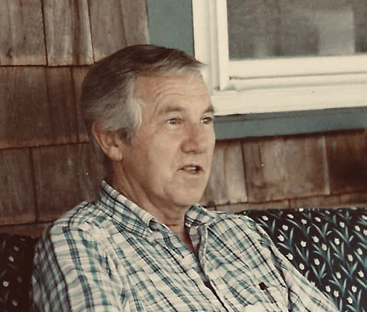Wayne R. Petersen
February 10, 1925 – January 25, 2023

James Baird. Photograph compliments of Kathryn Howell.
The birding community of Massachusetts lost a consummate scientist, teacher, and distinguished advocate for conservation when James Baird died on January 25, 2023, just 17 days before his 98th birthday.
James Baird was, by all accounts, a person who lived a rich and full life and was beloved by his wife and four children, as well as a host of friends and colleagues who were privileged to know him throughout his career as an ornithologist, educator, and visionary conservationist. He was born in Scotland and grew up mostly in the Jamaica Plain area of Boston, where Miriam Dickey of the Boston Children’s Museum served as his early mentor. Jim always had a consuming passion for birds no matter where he was, even when he ably served in in the Pacific Campaign with the U.S. Marine Corps during World War II. Another early mentor, the late Ruth Emery—the original Voice of Audubon in the 1950s—once shared with me how she would periodically receive written descriptions of birds Jim observed during combat for help with identification.
Following the war, Jim’s college years were spent at the University of Massachusetts and Rutgers University. Concurrent with these education years, Jim’s dedicated interest in birdbanding began to blossom, ultimately resulting in the publication of several important scientific papers on bird migration, most notably on Blackpoll Warblers. He was the director of Rhode Island’s Norman Bird Sanctuary in Middletown, Rhode Island, from 1955 to 1960. When he joined the Massachusetts Audubon Society in 1961, Jim Baird’s professional career took off. His combination of a charismatic personality, creative approach to studying birds and bird migration, extensive birdbanding experience, and timely association with two outstanding colleagues—Ian C.T. Nisbet and William H. Drury—quickly placed Jim in an environment where he was able to motivate audiences of all ages to become skilled field ornithologists and amateur naturalists. His position at Mass Audubon as Director of Natural History Services, along with his mastery of regional birdlife and extensive personal acquaintance with most of the active ornithologists and naturalists in New England, gave him a platform for accomplishing several outstanding achievements.
Surrounded by a cadre of enthusiastic youthful disciples, Jim initiated one of the first and most successful ecotravel programs in the country. He pioneered the Massachusetts Breeding Bird Atlas—the first statewide atlas in North America. He influenced the formulation of wetland protection legislation in Massachusetts, which became the model for federal legislation. Following the publication of Rachel Carson’s Silent Spring (1962), Jim encouraged state testing labs to test birds for the presence of hard pesticide residues in avian tissues. He was equally active in campaigns to remove lead shot from shotgun shells and fishing weights because of their proven pernicious effects on waterfowl.
One of Jim’s most significant accomplishments was to underscore the significance of neotropical habitat to wintering bird species. Concentrating on the tiny but significant tropical country of Belize, he established relationships and connections that ultimately led to the creation of the Programme for Belize—a land conservation agenda that got its start in the late 1980s by initially protecting 110,000 acres. This major land protection effort has grown and expanded so that today more than 260,000 acres of tropical forest habitat are protected in perpetuity.
While these spectacular conservation achievements reflect Jim Baird’s consummate skill as a visionary conservationist and bio-political activist, they hardly capture the humanity and generosity that were so much a part of his personality. A renaissance man, Jim had a love and knowledge of both bird art and antiques such that anyone who knew him would call him an expert. Antiques were one of many interests that he and his beloved wife Carol shared until late in their lives. Most important, it was Jim’s facility as a teacher and a mentor that many who knew him will most remember. There was never a time, both as a young tour guide working at Wellfleet Bay Wildlife Sanctuary in the 1960s or many years later when he guided me through some of my early trials and tribulations as an author, that I ever had a conversation with Jim Baird when I did not learn something. He was always a teacher, even when you did not know you were learning new things.
I will never forget the day in late August on a Monomoy Island tour at the Monomoy lighthouse where we always stopped for our picnic lunch, Jim produced a handful of tiny flycatchers—one small head between every two fingers—and asked us to identify the nondescript little creatures. After each of us rolled the dice, I can still remember listening with rapt attention as he explained that 1) was an Eastern Wood-Pewee, 2) was a Least Flycatcher, 3) was a Traill’s Flycatcher, and 4) was a Yellow-bellied Flycatcher. I learned a lot that day, both about Jim Baird and myself. James Baird was one of the great ones, let no one ever deny.
Thank you to Jim’s daughter Kathryn Howell for providing the photograph and information about Jim. His family suggests that if you would like to do something to celebrate Jim’s memory, please make a donation to Mass Audubon in his honor.